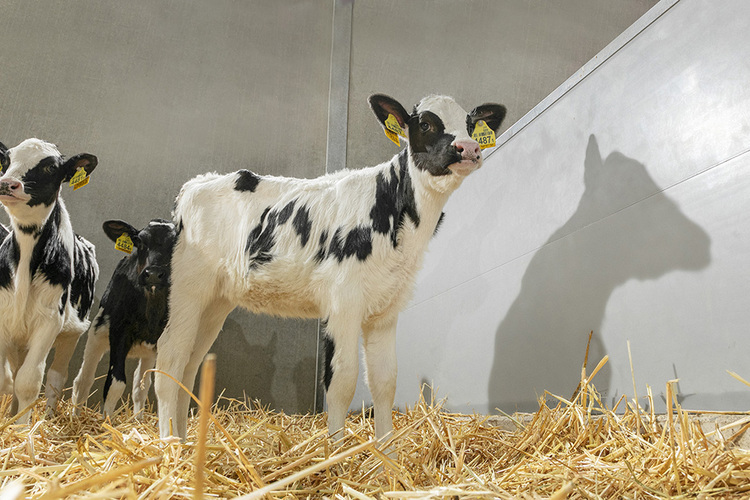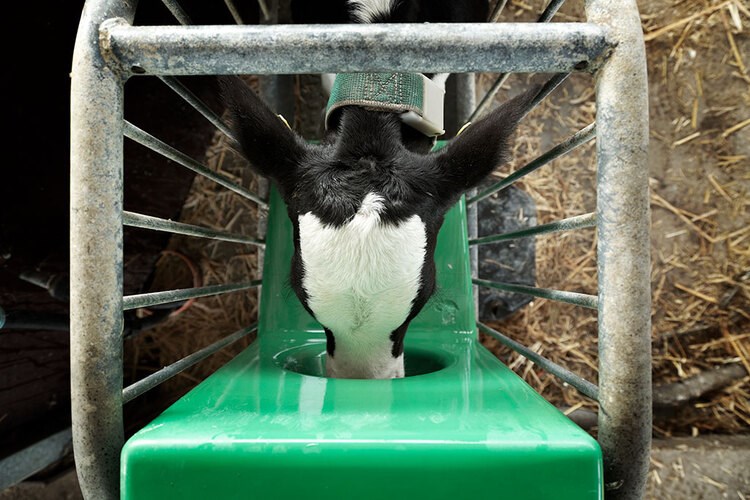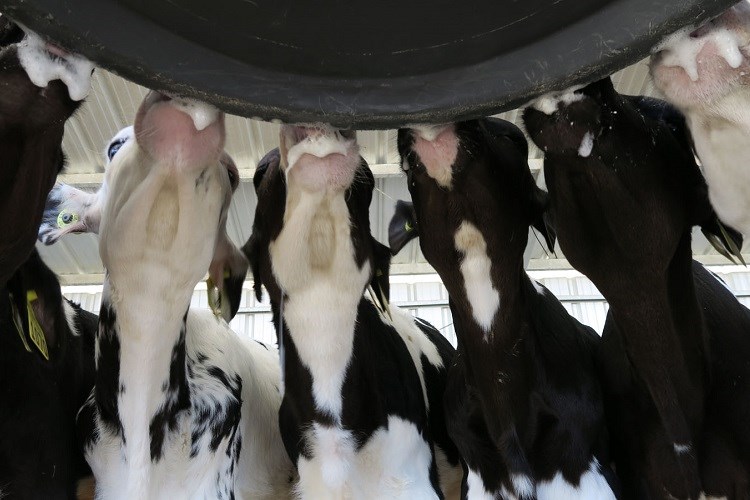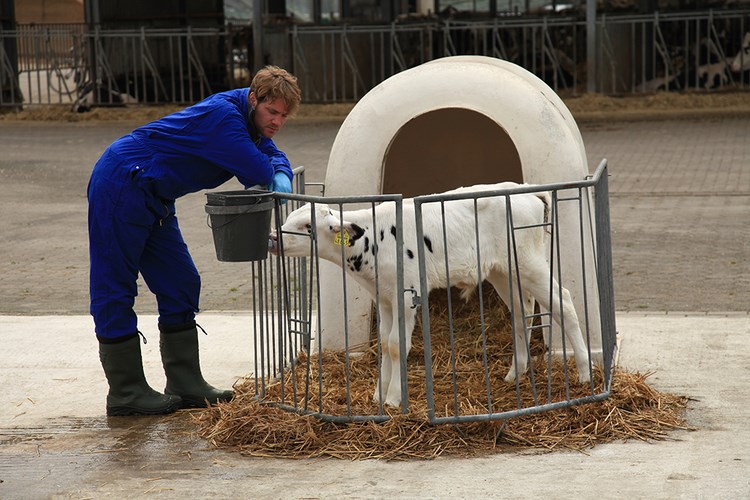Key takeaways from the research
-
Rumen in young dairy calves is depending on solid feed intake.
-
Inadequate solid feed intake can lead to a weaning dip.
-
To encourage healthy solid feed intakes, palatability is an important factor.
-
The use of preferred high-energy and high-protein ingredients in starter feeds increases intakes in the short term.

Feed ingredient preferences result in differences in starter feed intake immediately post-weaning
One of the main objectives of dairy calf management during the pre-weaning phase is encouraging solid feed intake, as growth and development of the rumen are stimulated by the fermentation of solid feed.[1] It is likewise vitally important that young calves ingest sufficient amounts of solid feed in order for a smooth weaning transition to occur. Studies of feed intake preference conducted over the last 30 to 40 years have found that preferences are influenced by physical properties, palatability and chemical signals. There are multiple feedback signals that control feeding behaviour, including physical ones.[2] Nonetheless, as palatability is important, taste preferences should be taken into account when formulating starter feeds.[3] While a good deal of research has been done on the use of flavouring agents, few studies have evaluated calves’ preferences for the actual feed types commonly used in formulating starter rations. A study was carried out by the University of Guelph, IRTA Spain, Lucta Spain, and the Catalan Institute for Research and Advanced Studies.[4] The objective of the study was to assess preferences in recently weaned calves for the feed types commonly used in starter rations and to see if those preferences persisted, even after they were mixed with another feed type in ration formulation.
Study design
A total of 500 recently weaned dairy calves were included in the study. Water, pelleted starter feed ad libitum and 4 L/d of calf milk replacer were fed from birth until weaning at day 62. Preferences for various feed types were tested at 3 and 5 days post-weaning. Important to note is that the starter feed they were given prior to the experiment included 12 different types of ingredients so that calves had minimal exposure to any individual feed type. The calves were given 6-hour pairwise preference tests of high-energy and high-protein feed types and were then tested using 50:50 mixtures of the highest and lowest-ranked high-protein and high-energy feeds. All tests were designed so that the preferences exhibited could be ascribed to taste and palatability.[5] Additionally, each pairwise test was repeated with 20 calves, to increase the power of the test, and to detect slight variations.
Clear differences in preference and intake of different ingredients were found
In the high-energy feed type tests, the wheatmeal was the highest-ranked while corn gluten feed ranked lowest. Calves consumed an average of 448.8 grams of the wheat meal compared to only 121.5 grams of corn gluten feed. In the high-protein feed type tests, soybean meal was the highest-ranking feed, while corn gluten meal ranked lowest. Calves consumed 605.1 grams of soybean meal compared to just 30.0 grams of corn gluten meal during the test.
In the third experiment, the results from both the high-energy feed test and the high-protein feed test were combined and it was tested if the calves’ ingredient preferences continued, even when combined 50:50 with other ingredients. As one might expect, the combination of the two highest-ranking high-energy and high-protein feeds (wheat meal and soybean meal) was highest ranked (calves consumed 515.8 grams on average), and the combination of the two lowest-ranking high-energy and high-protein feeds (corn gluten feed and corn gluten meal) ranked lowest (calves consumed 57.2 grams on average). The mixtures containing one highest ranked and one lowest-ranked feed ingredient (wheat meal + corn gluten meal and soybean meal + corn gluten feed) were rated equally, below the highest-ranking combination but above the lowest ranking combination. Thus, preferences in the ranking of mixtures were consistent with the ranking of individual ingredients.
Implications
Calves have distinct short term preferences for certain feed ingredients. As palatability of solid feed is a part of the complex equation leading to proper feed intake and rumen development, consideration could be given to such ingredients when formulating starter rations. Adding these highly palatable energy and protein sources may help to minimize the possible negative effects of less palatable ingredients. But, the possible linkage between short-term preferences and long-term intakes has not been studied yet. Therefore, it remains to be seen if palatability leads to greater intakes in the long run.
References
[1] Baldwin, R.L., McLeod, K.R., Klotz, J.L., and Heitmann, R.N., 2004. Rumen development, intestinal growth and hepatic metabolism in the pre-and post-weaning ruminant. J. Dairy Sci. 87: E55–E65.
[2] Forbes, J. M. 2007. Voluntary food intake and diet selection in farm animals. CAB Int., Wallingford, UK.
[3] Morrill, J.L. and Dayton, A.D. 1978. Effect of feed flavour in milk and calf starter on feed consumption and growth. J. Dairy Sci. 61: 229–232. and Drackley, J.K. 2008. Calf nutrition from birth to breeding. Vet. Clin. North Am. Food Anim. Pract. 24: 55–86.
[4] Miller-Cushon, E.K., Montoro, C., Ipharraguerre, I.R. and Bach, A. 2014. Dietary preference in dairy calves for feed ingredients high in energy and protein. J. Dairy Sci. 97: 1634-1644.
[5] Montoro, C., Boe, F., Ipharraguerre, I.R., and Bach, A. 2012. Development of a method to evaluate oro-sensory preferences in weaned calves. Livest. Sci.150 :374–380.



